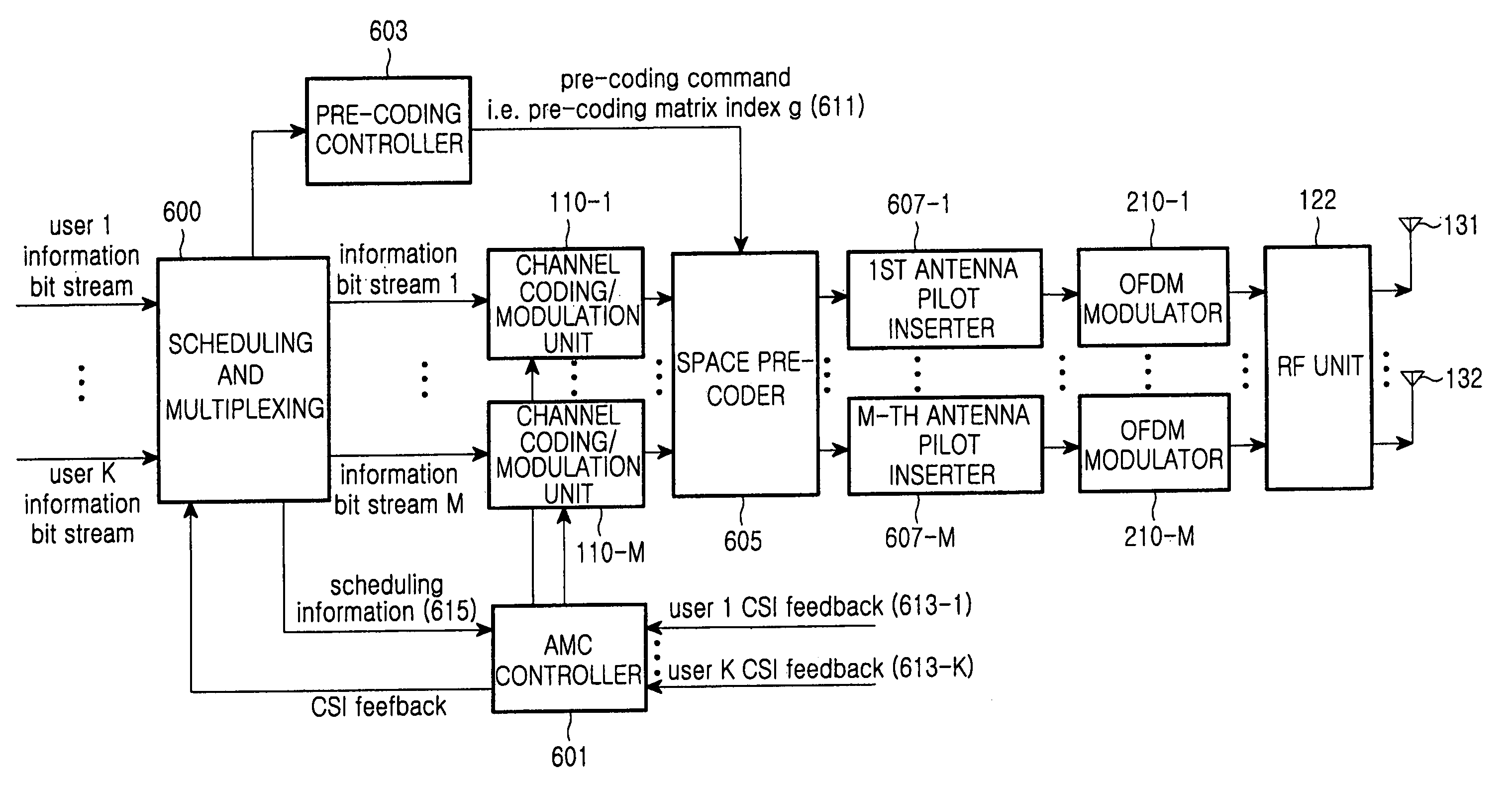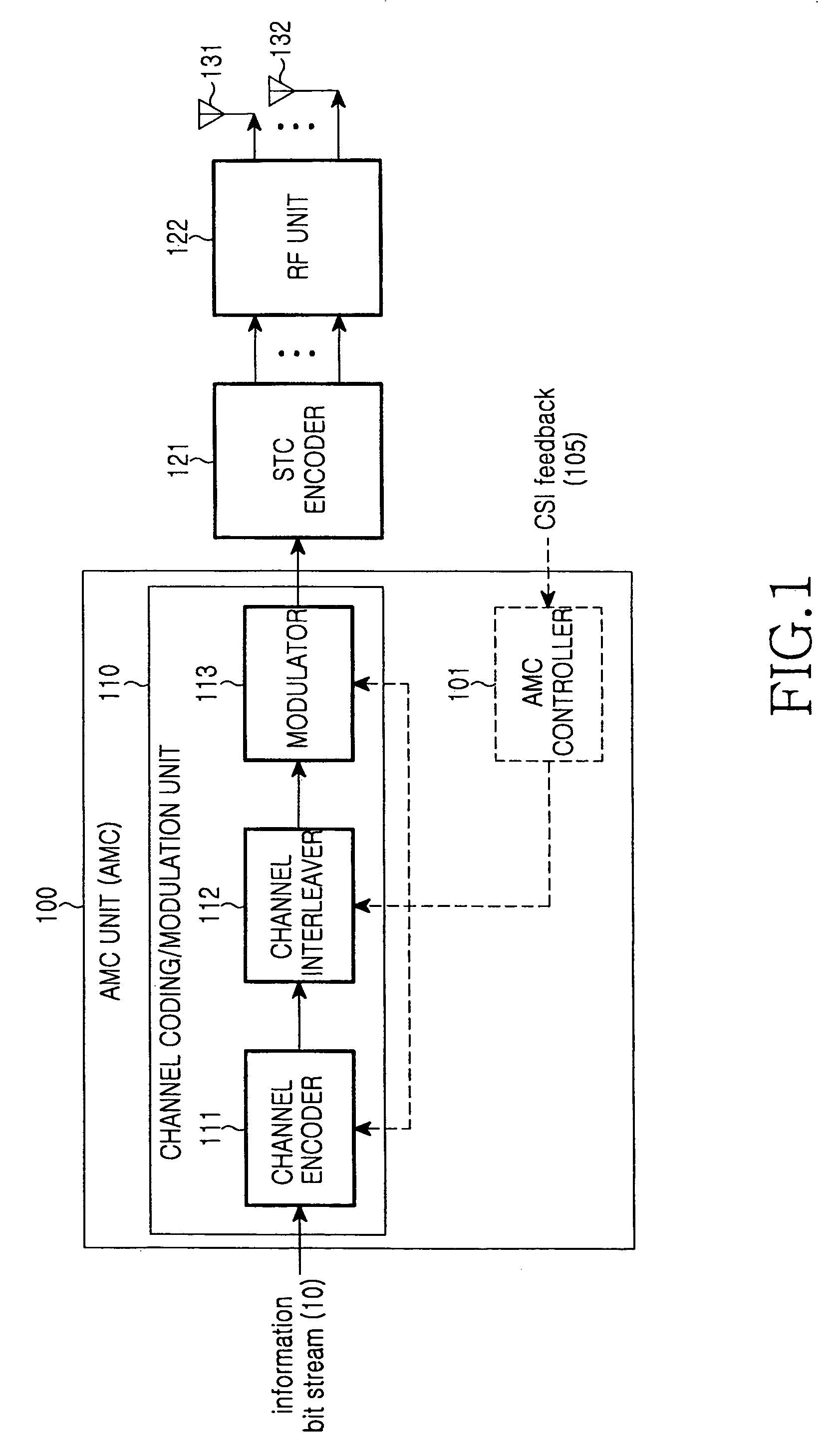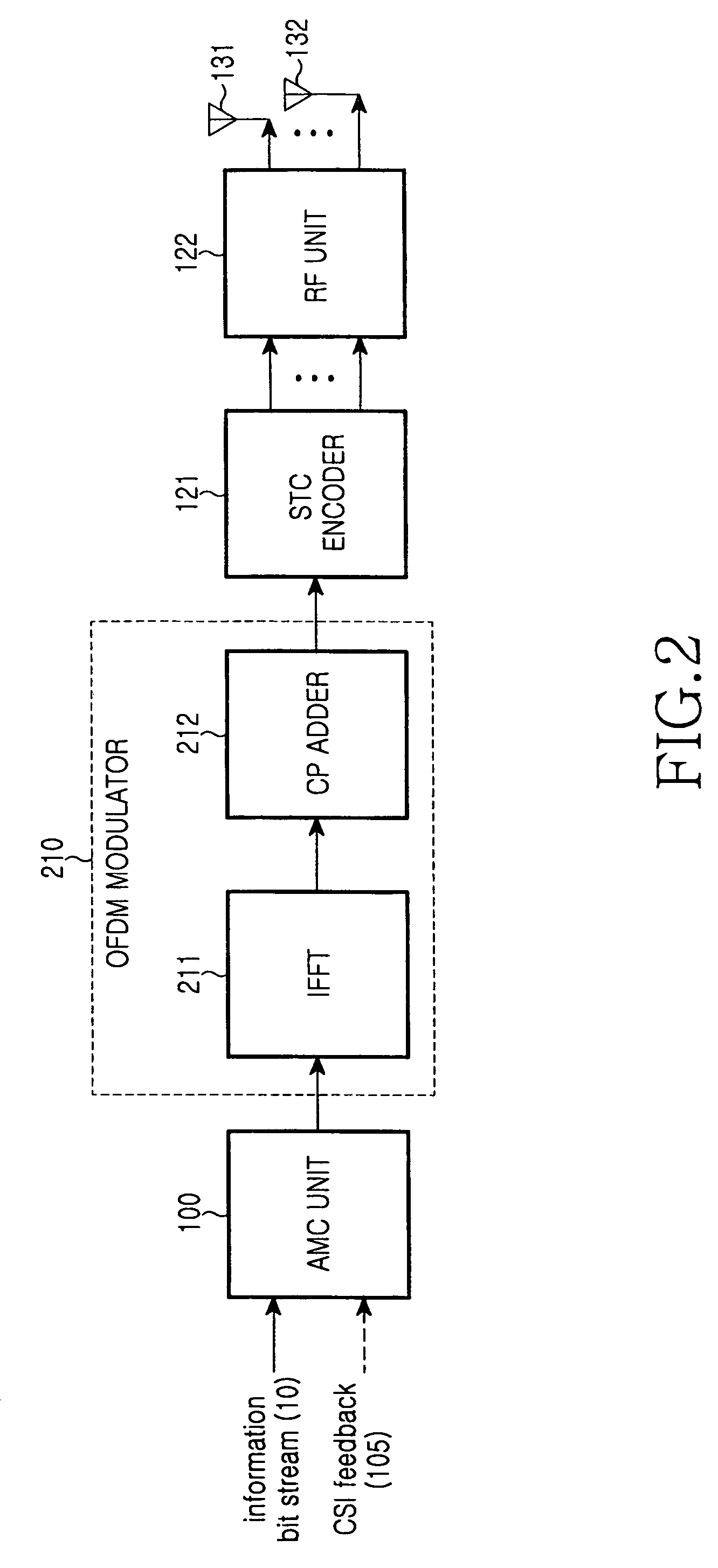Apparatus and method for transmitting/receiving data in a multi-antenna communication system
a communication system and antenna technology, applied in diversity/multi-antenna systems, multi-frequency code systems, channel coding adaptation, etc., can solve problems such as inability inability to prevent an increase in the probability of reception error, and inability to use amc methods and channel sensitive scheduling resource management methods to achieve system capacity improvement. the effect of increasing the system capacity
- Summary
- Abstract
- Description
- Claims
- Application Information
AI Technical Summary
Benefits of technology
Problems solved by technology
Method used
Image
Examples
Embodiment Construction
[0069]Exemplary embodiments of the present invention will now be described in detail with reference to the annexed drawings. In the following description, a detailed description of known functions and configurations incorporated herein has been omitted for clarity and conciseness.
[0070]As described above, multi-user diversity provides more gain as the level where it can perform scheduling increases. In the 3G mobile communication system such as HSDPA, EV-DV and EV-DO, scheduling is performed only in the time axis. However, in the OFDMA system, the scheduling can be performed in both the time and frequency axes, increasing the system capacity. Therefore, the purpose of SDMA described herein is to perform scheduling not only in the time and frequency axes but also in the spatial axis, thereby improving a multi-user diversity gain and increasing the system capacity.
[0071]With reference to the accompanying drawings, a description will now be made of exemplary embodiments of the present ...
PUM
 Login to View More
Login to View More Abstract
Description
Claims
Application Information
 Login to View More
Login to View More - R&D
- Intellectual Property
- Life Sciences
- Materials
- Tech Scout
- Unparalleled Data Quality
- Higher Quality Content
- 60% Fewer Hallucinations
Browse by: Latest US Patents, China's latest patents, Technical Efficacy Thesaurus, Application Domain, Technology Topic, Popular Technical Reports.
© 2025 PatSnap. All rights reserved.Legal|Privacy policy|Modern Slavery Act Transparency Statement|Sitemap|About US| Contact US: help@patsnap.com



